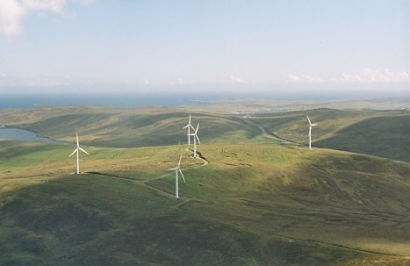
The online game has enabled users to rate more than 200,000 geotagged photos of outdoor scenes around Great Britain. It is the first time that scientists have quantified how the beauty of the environment might impact the amount of onshore wind energy Britain can generate.
Scenic locations have previously been linked with better health and increased happiness. The researchers believe their new model will help policymakers make hard decisions between preserving beautiful landscapes and generating enough onshore wind energy to allow the UK to achieve net zero.
The study, Scenicness assessment of onshore wind sites with geotagged photographs and impacts on approval and cost-efficiency, which has been published in the journal Nature Energy, involved academics from Warwick Business School, The Alan Turing Institute, and further institutions in Denmark, Germany, the Netherlands and the UK.
“We know from our previous research that spending time in beautiful environments is associated with greater health and happiness” said Suzy Moat, Professor of Behavioural Science and Co-Director of the Data Science Lab and a Fellow of The Alan Turing Institute. “However, some of the most stereotypically beautiful landscapes are also very windy locations, and could therefore be good sources of wind energy. What would happen if we prevented wind farms from being constructed in the most scenic locations in Britain? What impact would this have on the country's potential for onshore wind energy generation in the fight against climate change? This study addresses these questions. To identify the most scenic locations in Great Britain, we draw on over 1.5 million ratings of photographs taken all across the country, from the online game Scenic-or-Not. Using this data, we first demonstrate that wind farm planning applications are more likely to be rejected in more scenic locations: an application with one per cent higher scenicness value has a six per cent lower probability of being evaluated positively. We then feed the Scenic-or-Not data into a new model of Great Britain's onshore wind energy capacity. We find that not allowing wind farm installation in the top 10 per cent most scenic areas in Great Britain leads to 18 per cent lower generation potential, and between eight and 26 per cent higher costs.”
Tobias Preis, Professor of Behavioural Science & Finance, Co-Director of the Data Science Lab and a Fellow of The Alan Turing Institute, added that traditionally the beauty of our environment has proven very challenging to quantify at scale, due to a lack of appropriate data.
“Here, we use ratings of over 200,000 photos to model Britain’s wind energy potential while accounting for the beauty of candidate wind farm sites” Mr Preis said. “Our model will provide a new quantitative tool to help policymakers navigate this tricky trade-off between preserving beautiful landscapes and the vital need to maximise onshore wind energy capacity as we battle to reach net zero.”
Russell McKenna, of the University of Aberdeen, who was the first author of the study, said that the model provides a valuable resource for policymakers charged with developing national plans for future renewable energy generation.
“Compromises are required at all levels to achieve the energy transition” he added. “To effectively address these compromises, policy needs to incentivise investments in onshore wind that consider both cost and landscape as quality criteria.”
The study was written by Russell McKenna, of the University of Aberdeen, Jann Weinand, of the Karlsruhe Institute of Technology, Ismir Mulalic, of Copenhagen Business School, Stefan Petrovic, of The Danish Energy Agency, Kai Mainzer, of greenventory GmbH, alongside Professor Preis and Professor Moat.
For additional information:

